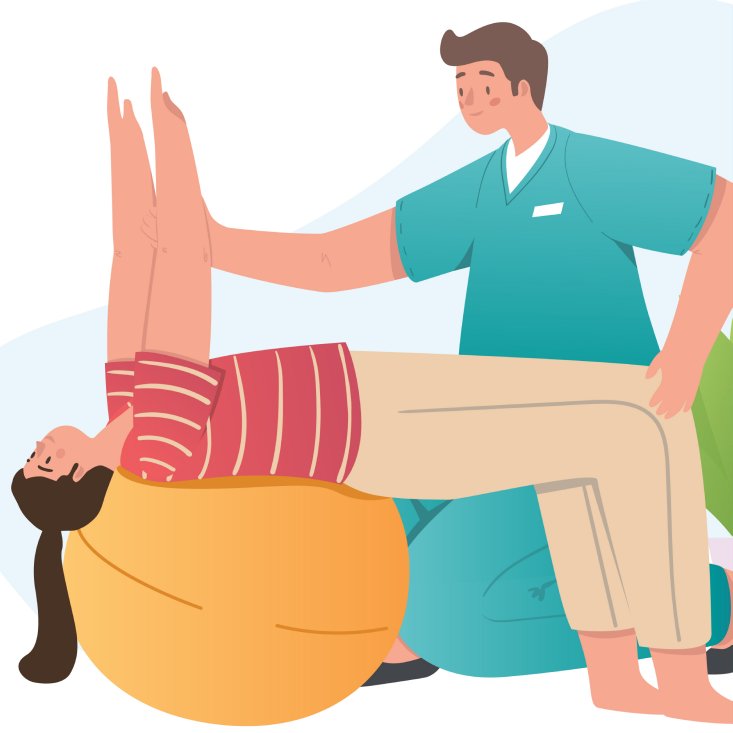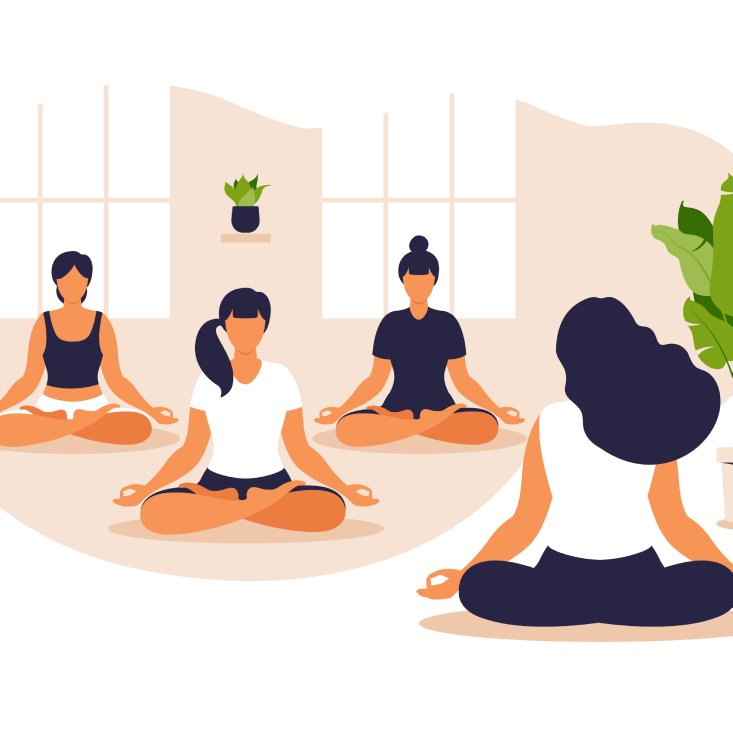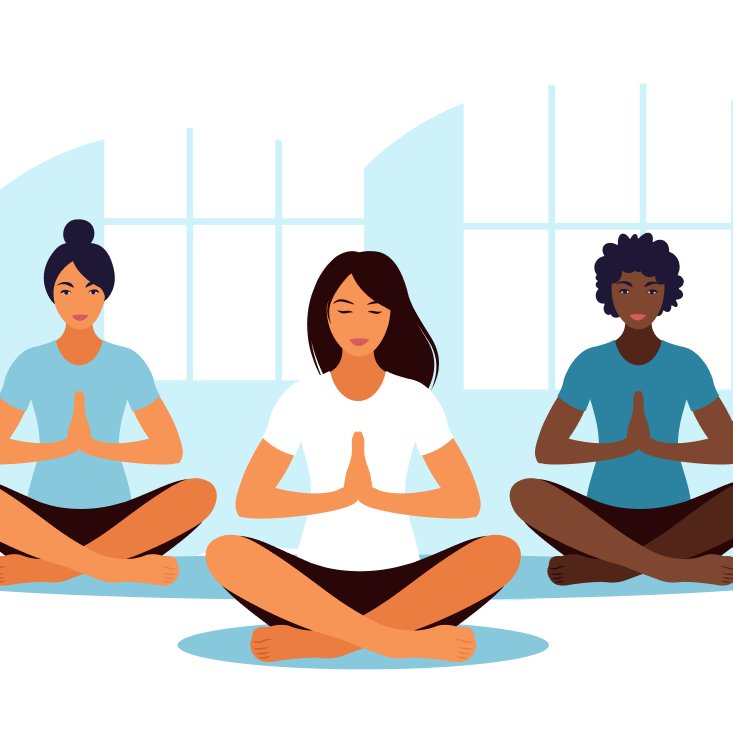Why is Yoga Therapy Important for Health & Healing
Introduction – Why This Topic Matters
Yoga has become one of the most widely practiced wellness tools across the world. Millions of people join yoga classes every day to improve flexibility, reduce stress, and feel healthier. But beyond the familiar yoga class at your local studio or online platform, another specialized practice is gaining popularity: Yoga Therapy.
If you’ve ever asked yourself, “What’s the difference between yoga and yoga therapy?” you’re not alone. At first glance, the two look very similar—mats, poses, and breathing techniques. Yet, the depth of intention and approach makes yoga therapy very different from a regular yoga session.
This article will help you understand how yoga therapy differs from regular yoga classes, why yoga therapy is important, and how to choose between the two for your own needs.
What’s the Difference Between Yoga and Yoga Therapy?
The key lies in purpose and personalization.
- Yoga is primarily about general well-being. It’s designed for groups, improving flexibility, strength, relaxation, and energy flow.
- Yoga Therapy takes things deeper. It’s tailored to individuals, often addressing specific physical, emotional, or psychological conditions.
You can think of yoga as a general workout class, while yoga therapy functions more like a personalized wellness session—similar to how a nutritionist creates a custom diet plan compared to a chef cooking for everyone at a buffet.
Understanding Regular Yoga Classes

To appreciate the uniqueness of yoga therapy, it helps to first break down what a standard yoga class looks like.
- Group environment – Classes usually involve many participants at once.
- Sequence-based practice – Teachers guide students through structured flows or asana (pose) sequences.
- Focus on fitness and relaxation – The goals are improving flexibility, building strength, reducing stress, and enhancing mindfulness.
- Popular styles – Hatha (gentle), Vinyasa (flow-based), Ashtanga (disciplined), Power Yoga (intense), and Yin (restorative).
While these classes bring immense benefits, they usually aren’t designed for therapeutic needs, like supporting someone recovering from an injury or managing anxiety.
What is Yoga Therapy?

Yoga Therapy is a professional application of yoga techniques with therapeutic intention. Unlike group-based yoga classes, yoga therapy focuses on the individual’s specific needs.
- Sessions are often one-on-one or in small groups.
- Yoga therapists are trained in anatomy, physiology, psychology, and yoga philosophy.
- Every practice is customized—the therapist may modify poses, suggest breathing techniques, or add mindfulness tools to suit the client’s condition.
It’s less about “nailing a pose” and more about supporting healing and resilience.
Why is Yoga Therapy Important?

So, why is yoga therapy important? The reasons are plenty.
- Mental health benefits – Yoga therapy helps manage anxiety, depression, trauma, and emotional imbalances.
- Chronic pain management – Gentle, targeted techniques reduce back pain, arthritis discomfort, and migraines.
- Recovery and rehabilitation – Supports healing post-surgery or after physical injuries.
- Lifestyle-related conditions – Offers tools to cope with hypertension, diabetes, and insomnia.
- Holistic approach – Instead of focusing only on symptoms, yoga therapy looks at body, mind, and spirit together.
It’s not about curing an illness—it’s about empowering people to take control of their well-being.
Goals of Regular Yoga vs. Yoga Therapy
|
Aspect |
Regular Yoga |
Yoga Therapy |
|
Focus |
Fitness, flexibility, stress relief |
Healing, recovery, condition management |
|
Approach |
Group-based, one sequence for all |
Personalized, tailored practices |
|
Outcome |
General health benefits |
Symptom relief, emotional resilience, improved quality of life |
|
Teacher’s role |
Instructor guiding class |
Therapist creating a wellness plan |
One is about enhancing general wellness, while the other is about targeted healing.
Teaching Approach and Environment

The classroom vibe is another major difference.
- Yoga classes – You’ll often find upbeat energy, group flow, maybe even background music.
- Yoga therapy sessions – The atmosphere is calm, private, and almost clinical. The pace is slower, with constant feedback between therapist and client.
This shift in the environment helps people feel safe and supported in their healing journey.
Role of the Teacher vs. Yoga Therapist
Another key distinction lies in the role of the professional.
- A yoga teacher guides students through set routines for overall health.
- A yoga therapist takes on the role of a wellness consultant. They analyze conditions, adapt practices, and monitor progress.
Most yoga therapists undergo the best yoga therapy training programs, which go beyond typical teacher training. These programs combine medical science, psychology, and therapeutic yoga techniques.
Tools and Techniques Used in Yoga Therapy
Yoga therapy employs a wide variety of tools depending on individual needs:
- Breathing techniques (Pranayama) – To calm the nervous system or energize the body.
- Meditation and mindfulness – To reduce stress, improve focus, and balance emotions.
- Gentle, adapted asanas – Customized poses with props or modifications for safety.
- Relaxation practices – Like Yoga Nidra (guided deep rest).
Lifestyle guidance – Incorporating yogic wisdom into diet, sleep, and stress management.
Who Benefits from Yoga Therapy?
Yoga therapy isn’t just for people with illnesses—it’s for anyone needing individualized support.
- Mental health seekers – Anxiety, depression, PTSD.
- People with chronic illnesses – Diabetes, arthritis, hypertension, asthma.
- Injury recovery patients – Sports injuries, post-surgical rehabilitation.
- Elderly individuals – Gentle yoga therapy for mobility and independence.
General wellness seekers – Anyone who wants a personalized, mindful approach.
Best Yoga Therapy Training Programs

For those inspired to become a yoga therapist, quality training is essential.
- Best online yoga therapy training – Ideal for students worldwide who want flexibility. These programs often combine virtual modules with supervised practice.
- Best yoga therapy training institutes – Many respected schools are affiliated with the International Association of Yoga Therapists (IAYT), ensuring global recognition.
- Top programs cover anatomy, psychology, yoga philosophy, therapeutic techniques, and supervised clinical practice.
Choosing the best yoga therapy training ensures that therapists are equipped to safely and effectively support clients.
How to Decide Which One is Right for You?
When choosing between yoga and yoga therapy, ask yourself:
- Do I want general health and fitness benefits? → Go for regular yoga classes.
- Am I managing a health condition or emotional challenge? → Yoga therapy may be more suitable.
- Do I enjoy group energy, or do I prefer one-on-one attention?
The right choice depends on your personal goals and current situation.
Combining Yoga and Yoga Therapy

The beauty is—you don’t have to choose one over the other. Many practitioners start with regular yoga classes and turn to yoga therapy when they need deeper healing. Some even integrate both, enjoying the energy of group classes while using yoga therapy for personalized support.
It’s like combining the broad benefits of exercise with the precision of therapy.
Common Misconceptions About Yoga Therapy
Let’s clear a few myths:
- “Yoga therapy is just gentle yoga.” – Not true. It’s highly customized and scientifically grounded.
- “It replaces medical treatment.” – Wrong. Yoga therapy complements, not replaces, traditional healthcare.
- “It’s only for sick people.” – False. Anyone can benefit from personalized yoga therapy.
The Future of Yoga Therapy
Healthcare systems worldwide are beginning to recognize the power of yoga therapy. Hospitals, mental health clinics, and wellness centers are integrating it into treatment plans. With demand growing, more institutions are offering the best yoga therapy training to meet this need.
As more research highlights its benefits, yoga therapy is likely to become a mainstream part of integrated medicine.
Conclusion
So, what’s the difference between yoga and yoga therapy? While both share roots in ancient practice, their paths diverge in intention.
- Regular yoga = fitness, stress relief, group practice, general well-being.
- Yoga therapy = personalized healing, therapeutic tools, and tailored support for specific conditions.
Both are valuable, but the right choice depends on your goals. If you’re looking to dive deeper, explore the best yoga therapy training programs to become part of this growing field.
FAQs
- Can I switch from yoga classes to yoga therapy easily?
Yes. Many students start with yoga classes and shift to yoga therapy when they want personalized guidance. - Is yoga therapy covered by insurance?
In some countries, yes. Coverage depends on healthcare systems and recognition of yoga therapy as a complementary treatment. - How long does it take to see results with yoga therapy?
It varies. Some feel relief in weeks, while chronic conditions may take longer. Consistency is key. - Can beginners start with yoga therapy?
Absolutely! In fact, beginners may benefit more because they get customized attention from the start. - Is yoga therapy recognized globally?
Yes, and its recognition is growing. The International Association of Yoga Therapists (IAYT) has helped establish global standards.










Dr. Priya Vasudevan M.D, AB. Dip ABLM